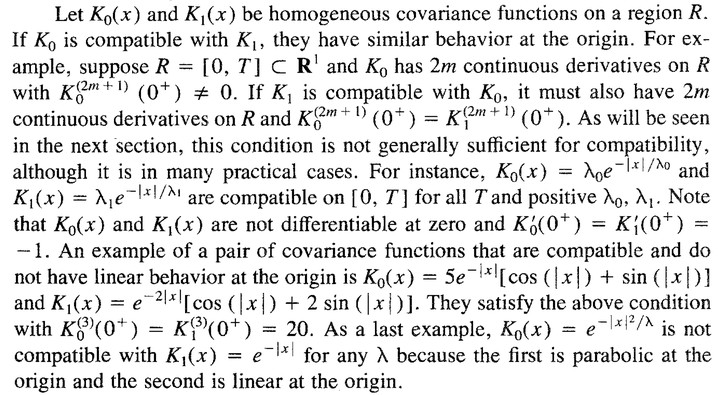
Abstract
The impact of using an incorrect covariance function on kriging predictors is investigated. Results of Stein (1988) show that the impact on the kriging predictor from not using the correct covariance function is asymptotically negligible as the number of observations increases if the covariance function used is ‘compatible’ with the actual covariance function on the region of interest $R$. The definition and some properties of compatibility of covariance functions are given. The compatibility of generalized covariances also is defined. Compatibility supports the intuitively sensible concept that usually only the behavior near the origin of the covariance function is critical for purposes of kriging. However, the commonly used spherical covariance function is an exception: observations at a distance near the range of a spherical covariance function can have a nonnegligible effect on kriging predictors for three-dimensional processes. Finally, a comparison is made with the perturbation approach of Diamond and Armstrong (1984) and some observations of Warnes (1986) are clarified.